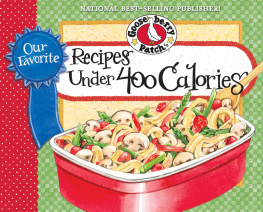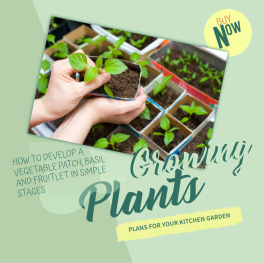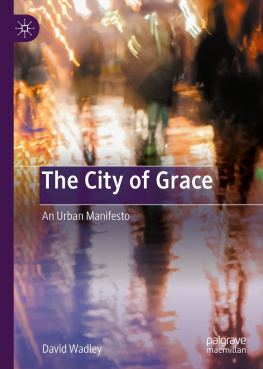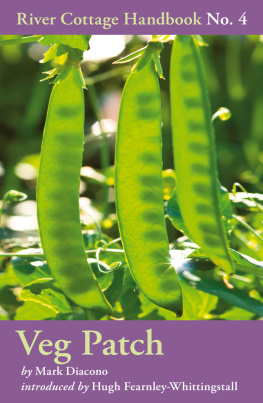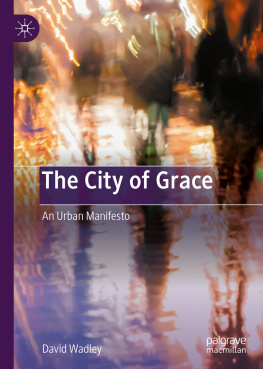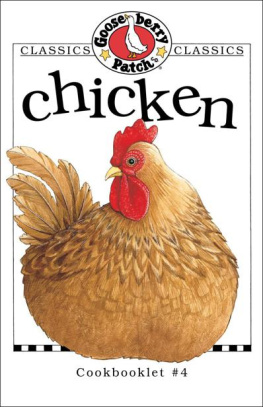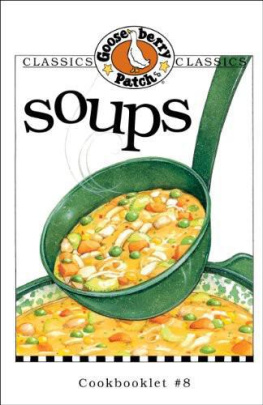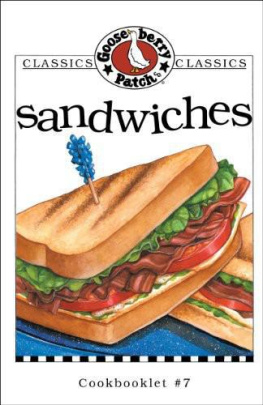Paul Grace - The Urban Vegetable Patch
Here you can read online Paul Grace - The Urban Vegetable Patch full text of the book (entire story) in english for free. Download pdf and epub, get meaning, cover and reviews about this ebook. year: 2021, publisher: Hardie Grant Books (UK), genre: Home and family. Description of the work, (preface) as well as reviews are available. Best literature library LitArk.com created for fans of good reading and offers a wide selection of genres:
Romance novel
Science fiction
Adventure
Detective
Science
History
Home and family
Prose
Art
Politics
Computer
Non-fiction
Religion
Business
Children
Humor
Choose a favorite category and find really read worthwhile books. Enjoy immersion in the world of imagination, feel the emotions of the characters or learn something new for yourself, make an fascinating discovery.
- Book:The Urban Vegetable Patch
- Author:
- Publisher:Hardie Grant Books (UK)
- Genre:
- Year:2021
- Rating:3 / 5
- Favourites:Add to favourites
- Your mark:
- 60
- 1
- 2
- 3
- 4
- 5
The Urban Vegetable Patch: summary, description and annotation
We offer to read an annotation, description, summary or preface (depends on what the author of the book "The Urban Vegetable Patch" wrote himself). If you haven't found the necessary information about the book — write in the comments, we will try to find it.
The Urban Vegetable Patch — read online for free the complete book (whole text) full work
Below is the text of the book, divided by pages. System saving the place of the last page read, allows you to conveniently read the book "The Urban Vegetable Patch" online for free, without having to search again every time where you left off. Put a bookmark, and you can go to the page where you finished reading at any time.
Font size:
Interval:
Bookmark:



Like all reputable gardening books, this one starts with a woman in her twenties, with an overdraft, living in an overpriced house-share in a sprawling city, who found happiness by growing vegetables in a variety of spaces. Or something along those lines.
I dont consider myself to be a professional gardener. Im more a keen amateur self-taught who stumbled upon the joy of growing vegetables because I wanted to live more sustainably and save a few pennies towards my non-existent mortgage savings account along the way. Five years on and my mates constantly text me for advice as if Im some sort of WhatsApp version of a gardening hotline. But so much of what Ive learnt has come through trial and error, panicked phone calls to my mum, and our old friend Google. This book captures all that knowledge, gained while growing vegetables everywhere from windowsills to shared gardens to an allotment. I hope these tips and tricks will see you well on your way to growing your own too, and living a happier and hopefully more sustainable life.
We are constantly bombarded by notifications, emails and the latest memes doing the rounds on social media. Did you know that the average person checks their phone 58 times a day? Or that we spend over 8 hours a day looking at a screen? Its exhausting, not to mention the toll it takes on our mental health. Im sure youre wondering how growing your own vegetables has anything to do with this, but it really does. I cant describe the transformative feeling you can get from tending to plants, taking a step away from technology and focusing on the present even if only for a few minutes.

The planet we live on is not only crazily busy, its also in danger. Sorry to bring up the elephant in the room but climate change is real and its not going away any time soon. I know that tackling it can feel like quite an overwhelming task, but together we can create real change and the sooner we each do our bit, the better. You might find yourself thinking what difference will it make if I grow my own vegetables instead of buying them at a supermarket?. But food production accounts for about a quarter of the worlds greenhouse emissions, so growing your own is in fact an instant and direct way to make a big impact on them. Not only that, but youll be able to avoid food waste by harvesting produce only when you need it and without the single-use plastic that dominates the fruit and vegetable aisles of shops. All this plastic adds up: according to the United Nations, more than eight million tonnes of the stuff finds its way into our oceans every year, affecting not only animals but humans too. In fact, the average human consumes 50,000 particles of microplastics annually and these particles have been detected in our water: in vegetables, bread and even beer.
You may be concerned about the space you have or the cost of starting up your own vegetable patch. You might live in a shared house, small flat or with your parents. Perhaps you only have a balcony, or are part of a community garden or maybe you have no space at all. Ive experienced all these scenarios and none of them has stopped me growing my own. All the vegetables in this book can be grown in almost any space; you can create your own little oasis, wherever you are.
Lack of cash neednt stop you either. You can turn food tins into plant pots, propagate produce from food scraps you otherwise would have thrown in the bin and swap seeds with people in person or via the internet. And the key thing knowledge is free. Borrow gardening books, explore the wealth of tutorials online and talk to other gardeners: they are a friendly bunch, always willing to share their wisdom.
You might think you need to be green-fingered to grow your own vegetables but this isnt the case. It doesnt matter what your background is or whether you have horticultural genes. Gardening really is for everyone and the vegetables in this book will show you that. Its about learning from your mistakes there is no shame in getting it wrong. Ive witnessed someone destroy a courgette (zucchini) plant by falling on it; Ive gone on holiday and left my housemates in charge of my plants, only to come back and discover them dead because nobody watered them; Ive pruned a tomato plant by trimming it at the main stem, leaving only a stub. As a wise woman once said, you learn from the pain, and lord knows Ive felt the pain when Ive lifted up a beautiful butternut squash only to see that the other side has been completely eaten by a slug.
On the flip side are the successes. Ive grown a melon in a paved garden, seen the joy on my friends faces when Ive given them a bag full of fresh vegetables and experienced the thrill of eating something delicious that Ive grown with my own hands. The beauty of gardening is that youre constantly learning and discovering new things while feeling a wonderful sense of serenity and accomplishment how can you not enjoy that?
This book will teach you to nourish not only yourself, both physically and mentally, but the planet as well. Take care of nature and it will take care of us. Dig in.
There are so many reasons to grow your own vegetables. Perhaps you want to stick two fingers up to the capitalist element of our current food production system, or maybe the recent global pandemic has got you thinking you might need to be able to produce your own food if the world goes up in flames. Perhaps you like the idea of knowing exactly where your dinner has come from. Or maybe the thought of picking fresh herbs from your windowsill and podding garden-fresh peas simply appeals to you. Whatever your motivation is, I can confirm that it is a good idea.
Here are my top four answers to the question: why do this?
Have you ever considered how far the vegetables on your plate have travelled? Yes, some shops use little labels telling you where their produce has come from but how often do you read and really think about them? In the US, the average distance that produce travels, from farms to tables, is in fact 1,500 miles (2,414 kilometres). Thats equal to the distance from Berlin to Cairo or Mexico City to Los Angeles: pretty damn far.
Food production and transportation are huge contributors to climate change and global warming, with the former responsible for one quarter of the worlds greenhouse emissions. These industries rely on fossil fuels to power irrigation pumps as well as the machinery that harvests and transports the food which in turn produces pollution. Pesticide and herbicide distribution also requires fossil fuels and of course can affect the environment.
Fruit and vegetables are the most imported commodity groups in the world: over a third of vegetables in the US are imported and in Britain a massive 75 per cent of fresh produce is brought in from elsewhere. As well as pumping carbon into the atmosphere, that transportation affects the quality and taste of the produce: to enable fresh food to survive the journey, it may be picked when under-ripe, treated with chlorine-based compounds to prolong shelf life or sprayed with ethylene gas to bring on ripeness when required.
Growing your own veg, even a few lettuces on a windowsill, means you have taken one of the biggest steps you can towards reducing your carbon footprint.
Next pageFont size:
Interval:
Bookmark:
Similar books «The Urban Vegetable Patch»
Look at similar books to The Urban Vegetable Patch. We have selected literature similar in name and meaning in the hope of providing readers with more options to find new, interesting, not yet read works.
Discussion, reviews of the book The Urban Vegetable Patch and just readers' own opinions. Leave your comments, write what you think about the work, its meaning or the main characters. Specify what exactly you liked and what you didn't like, and why you think so.



